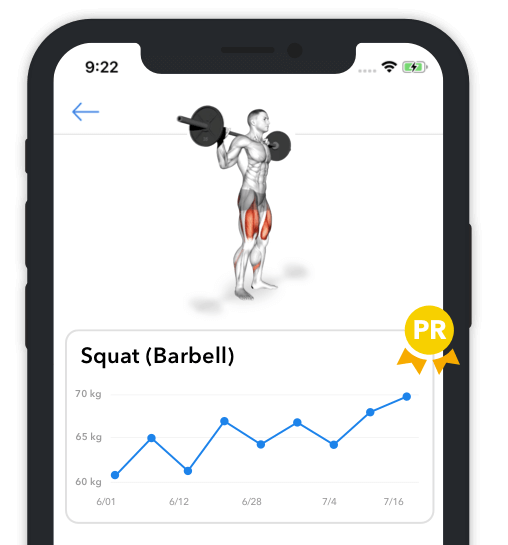The Benefits of the Pull-Up
Pull-ups are one of the most effective bodyweight exercises to strengthen the back, biceps, grip, and core. A notable benefit of pull-ups is their impressive overloading potential. You can start doing the movement as a complete beginner (more on that below) and gradually progress to the elite level by doing more reps, performing more challenging variations, and attaching external weights to yourself.
As the name suggests, pull-ups are about pulling yourself up on a horizontal bar. The objective is to reach up, grab a sturdy bar with your preferred grip and use the muscles in your upper body to move up.
Another pull-up benefit is the exercise’s impressive ability to develop your back. Pull-ups emphasize the latissimus dorsi (lats), the largest upper body muscle, forcing it to grow and making your back broader and more defined (1, 2). Strengthening the lats is also beneficial for your overall pulling strength, shoulder stability, and spinal health. As a result, you become more athletic, and everyday tasks feel easier to do.
We recommend including pull-ups early in your training. The movement is demanding, and you should perform it while you’re at your strongest. Always leave at least one or two reps in the tank and rest long enough in-between sets to recover and maintain your performance.
Level of Exercise: Intermediate
How to do a Pull-Up
- Stand underneath a pull-up bar.
- Reach up and grab the bar with an even, overhand grip (palms facing forward). Have your hands slightly wider than shoulder level apart and envelop the bar with your thumbs for a more secure grip.
- Bring your shoulders back and engage your abs. Doing so will brace your upper body and put your lats in a better position to contribute during pull-ups.
- Bend your knees to lift your feet off the floor and hang from the bar. Some people might have to step over something or jump to grab the bar. In that case, retracting the shoulder blades will happen while they hang from the bar, mimicking the motion in a scapular pull-up.
- Take a breath and pull yourself up by bending your elbows.
- Move up as much as possible––ideally, until your chin is over the pull-up bar.
- Hold the top position for a moment.
- Lower yourself slowly by extending your elbows and exhale on the way down. Keep your shoulders retracted.
- Take another breath and repeat.
What muscles does the pull-up activate?
The primary muscle group involved in pull-ups is the latissimus dorsi (lats)–-the largest muscle in the upper body (1, 2). Our lats make up a significant portion of the mid and upper back and contribute to numerous arm motions. The muscle produces force for us to move up and continues to work as we lower ourselves during the second half of each repetition.
Other muscles, including the rhomboids, trapezius, infraspinatus, and rear deltoids, produce force for shoulder retraction and assist the lats.
Our biceps are the second muscle group that works during pull-ups (1). The muscle makes up the front portion of our upper arms, and its primary function is elbow flexion, which occurs as we pull ourselves up (3). Similar to the lats, our biceps continue to work as we lower ourselves, controlling us on the way down. The brachialis, a muscle that lies underneath the bicep, works by assisting with elbow flexion (4).
The forearm musculature also plays a role during pull-ups. For example, the brachioradialis contributes to elbow flexion and helps us hold onto the bar while doing pull-ups (5).
Besides the muscles with an active role, our core contributes to overall stability and prevents us from swinging back and forth. The primary muscles are the rectus abdominis, erector spinae, and gluteus maximus. Each flexes isometrically for us to remain steady as we move up and down.
Pull-up Vs. Chin-Up
Pull-ups and chin-ups are similar in many ways. The primary difference between the two movements is how you grip the bar, which impacts each activity’s effects on your muscles. With chin-ups, you must use an underhand grip where your palms face back. In contrast, pull-ups are about using an overhand grip with your palms facing forward.
Using an underhand grip and doing chin-ups is helpful because it allows you to engage your biceps more effectively. The exercise can be more beneficial for beginners learning to pull themselves up. On the other hand, pull-ups lead to slightly better back activation, but your biceps are less able to produce force and create elbow flexion to move up.
Both movements develop your pulling strength and strengthen your core, resulting in muscle gain, athleticism, and improved functionality.
A drawback of chin-ups is that you might struggle to engage your back effectively because your biceps take over, turning the exercise into a bodyweight curl. Pull-ups are also not without their faults because learning the exercise takes time and trainees often resort to shortening the range of motion, flexing their spine, and using jerking movements to complete more reps.
Which movement you choose to perform will mostly come down to your preferences and abilities. Both exercises are similar in many ways and train the same muscles. But, the grip type influences which muscles work more and determines the long-term effects of each exercise.
Progression into a Pull-Up
One of the best tools to progress into a full pull-up is to do negatives, also known as eccentrics. The objective is to get to the top of the pull-up repetition by jumping up or stepping on something and lowering yourself as slowly as possible. Doing so strengthens all the muscles involved in pull-ups and teaches you the proper movement pattern even if you lack the necessary strength for complete repetitions.
Another tool you can use is the band-assisted pull-up. Take a strong looped resistance band, wrap it over the pull-up bar, and let it hang like a noose. Step over the band and grab the pull-up bar. The band will remove some resistance, making the exercise more accessible. You can control how much the band helps by first stepping with both feet, then one, then both knees, then one knee. Each successive modification lessens the band’s assistance. The band’s thickness will also impact the resistance. A thicker band will make the pull-up easier, whereas a thinner one will provide minimal assistance.
Inverted rows are also beneficial for developing your pull-up strength. You can perform these on a Smith machine because it offers security, and you can easily adjust the bar’s height. Begin in a more upright position and make your body more horizontal as you develop strength.
Combine the three activities, and you will work up to your first pull-up in weeks. For example:
Monday – negative pull-ups (3-4 sets)
Wednesday – band-assisted pull-ups (3-4 sets)
Friday – inverted rows (2-4 sets)
Variations and Modifications of the Pull-Up
1. Chin-Up
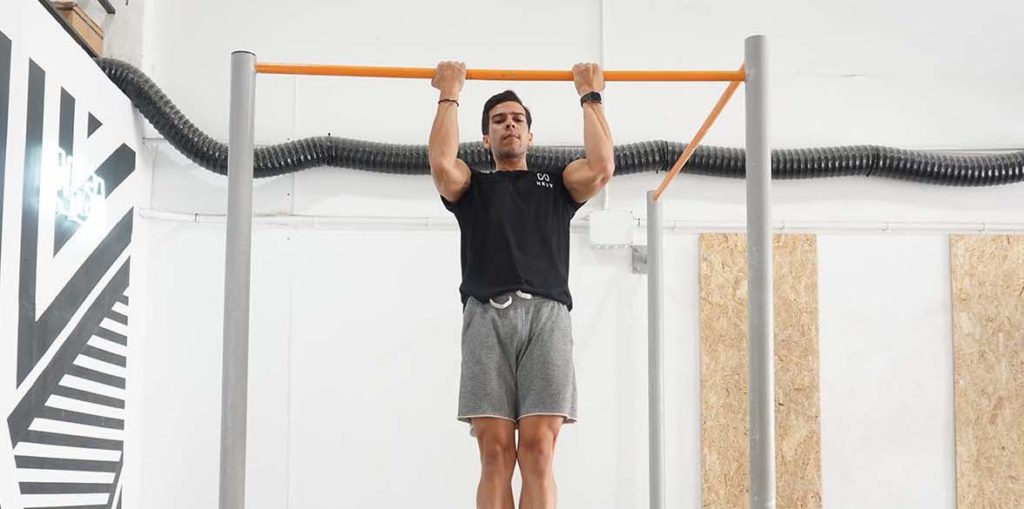
As discussed in one of the previous points, chin-ups are an effective alternative to the pull-up. Raise your arms to grab the bar but have your palms facing back. Doing so puts your biceps in a better position to produce force, which is one reason why beginners find chin-ups easier than pull-ups.
2. Isometric Hold Pull-Up
The isometric hold pull-up is an effective variation you can perform to develop your strength and start doing more repetitions. You must pull yourself up, jump to the top, or step on something and hold the top position for as long as possible. Once you start moving down, lower yourself and recover.
3. Kipping Pull-Up
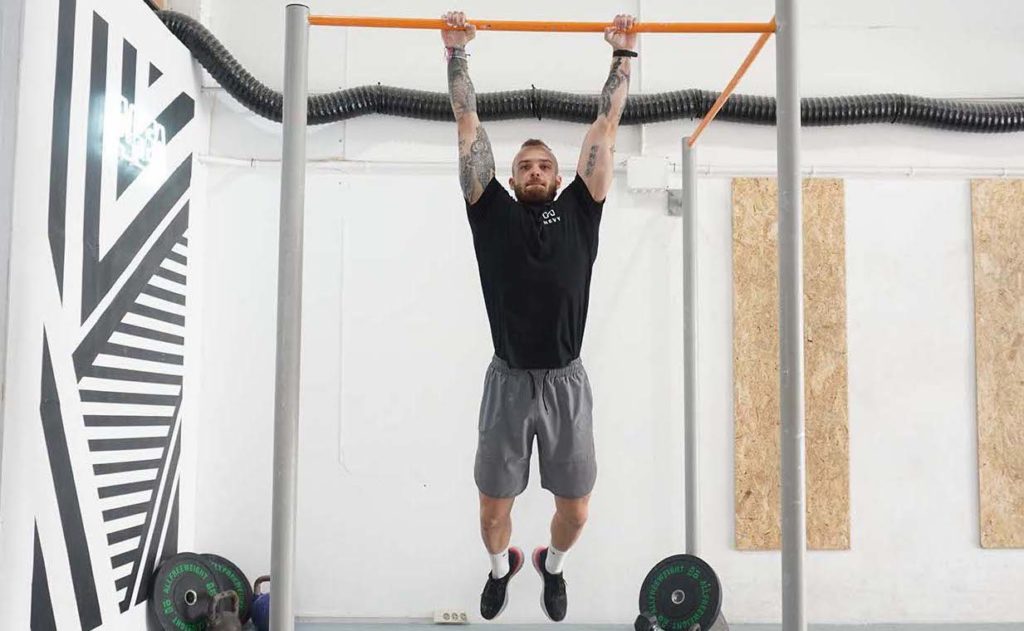
The kipping pull-up is a CrossFit variation of the classic exercise where you generate momentum through kipping. Unlike strict pull-ups, the kipping variation is about synchronizing body movements to pull yourself up at the right time and perform as many reps in as little time as possible.
Mistakes to Avoid
Shortening the Range of Motion
One of the most common errors with the pull-up is shortening the range of motion. Trainees often resort to a shorter range of motion because they lack the necessary strength for complete repetitions. Doing so leads to less effective repetitions and prevents you from effectively stretching and contracting the involved muscles. Avoid the error by lowering yourself until your arms are almost entirely straight and pulling up until your chin is over the bar.
Not Controlling the Eccentric
Another common error with pull-ups is only focusing on the upward motion while completely ignoring the descent. Trainees often put all of their efforts into pulling themselves up and simply drop to the bottom, making the exercise far less effective. The descent is essential for any activity because your muscles continue to work as they lengthen passively under a load. Avoid the error by maintaining a consistent tempo between going up and moving down. If it takes two seconds to pull yourself up, lower yourself for another two seconds.
Going too Wide
The third error with pull-ups is placing your hands too far apart on the bar. Prevailing wisdom suggests that using a wider grip is more beneficial for back activation, so many trainees believe they should use the widest grip possible. But, doing so can place your shoulders in a weaker position and hinder your performance. A much better approach is to have your hands slightly wider than shoulder-width apart, but it never hurts to experiment with grip width to see what works best.
Similar Exercises to the Pull-Up
Dead Hang
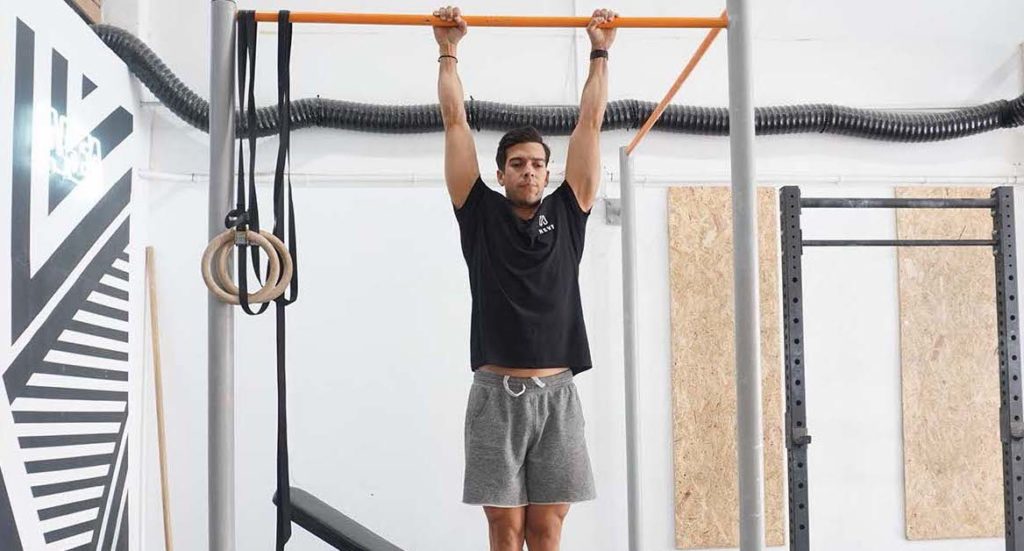
Dead hangs are an excellent bodyweight exercise that strengthens your grip, arms, back, and midsection. The objective is to grab a pull-up bar and hang while doing your best not to swing back and forth.
Inverted Row
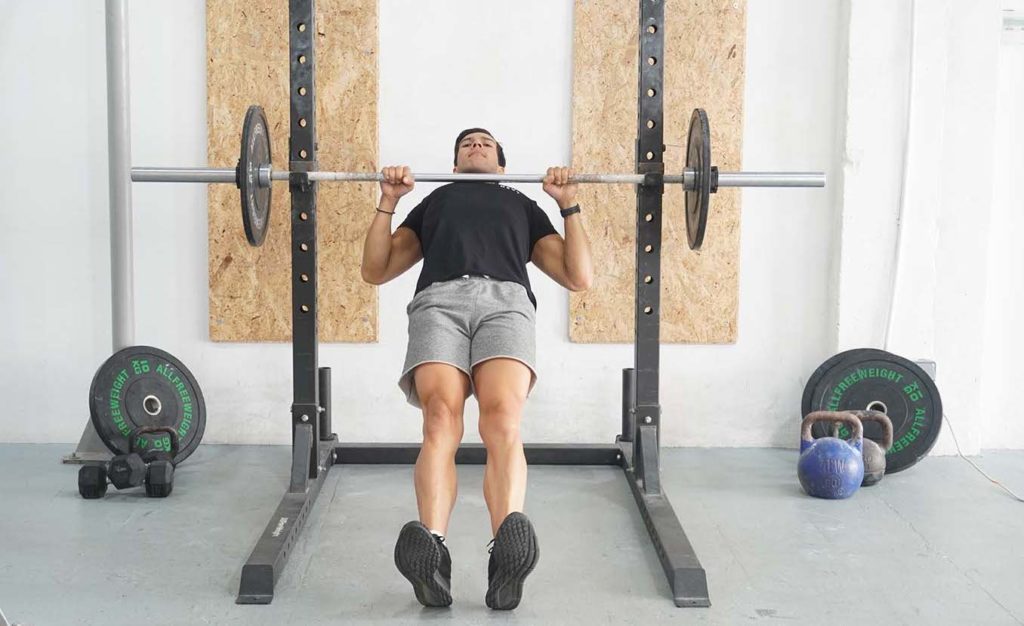
Like pull-ups, the inverted row is an effective bodyweight movement for the back, biceps, and midsection (6). The objective is to grab a horizontal bar, lean back, and keep your feet on the floor. Once in position, pull yourself to the bar and extend your arms to complete one repetition. The more upright your body is, the easier it is to pull yourself up. In contrast, having a more horizontal body position makes the exercise more challenging.
Chest Supported Incline Row (Dumbbell)
Chest-supported incline rows with dumbbells are an effective assistance exercise for the back and biceps. The objective is to set a gym bench at an incline, lie over it face down, and hold a dumbbell in each hand. From there, repeatedly pull the weights to your torso, squeezing your back muscles at the top.
